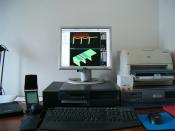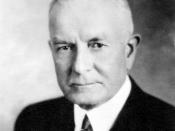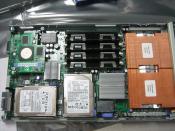-1911 Charles R. Flint arranges the merger of the International Time Recording Company, Computing Scale Company, and the Tabulating Machine Company to form the Computing-Tabulating-Recording Company (C-T-R). The new company is based in New York City and has 1,300 employees. George Fairchild becomes the first chairman of the board of directors. C-T-R will be renamed International Business Machines Corporation in 1924.
-1914 Thomas J. Watson, Sr., joins the Computing Tabulating Recording Co. (C-T-R) as general manager. The next year Watson is elected president of the company.
-1924 The Computing- Tabulating- Recording Co. is renamed International Business Machines Corporation (IBM). The company had operated under the IBM name in Canada since 1917.
-1928 IBM redesigns the punch card to hold 80 columns, almost double the previous capacity. The patented new design, featuring rectangular holes and called the "IBM card," becomes so popular that the name essentially becomes synonymous with punched cards.
-1944 IBM presents its first large scale computer, the Automatic Sequence Controlled Calculator (ASCC), to Harvard University. Also known as the Mark I, the ASCC is the first machine to execute long calculations automatically. More than 50 feet long, eight feet high, and weighing almost five tons, the ASCC uses electromechanical relays to perform addition, multiplication, and division.
-1952 IBM signals its commitment to electronic computing as it introduces the IBM 701, the company's first production computer and a watershed in the computing industry. Designed primarily for scientific calculations, the 701 features the IBM-invented tape drive vacuum column, an innovation which paved the way for magnetic tape to become a popular storage medium.
-1953 IBM announces the IBM 650 Magnetic Drum Calculator, an intermediate size electronic computer, to handle widely diversified accounting and scientific computations. Warmly received by universities and businesses, nearly 2,000 of the 650...



IBM
This is a useful chronology of key events in the history of Big Blue, but you may want to update it for the last twenty years or so.
4 out of 4 people found this comment useful.